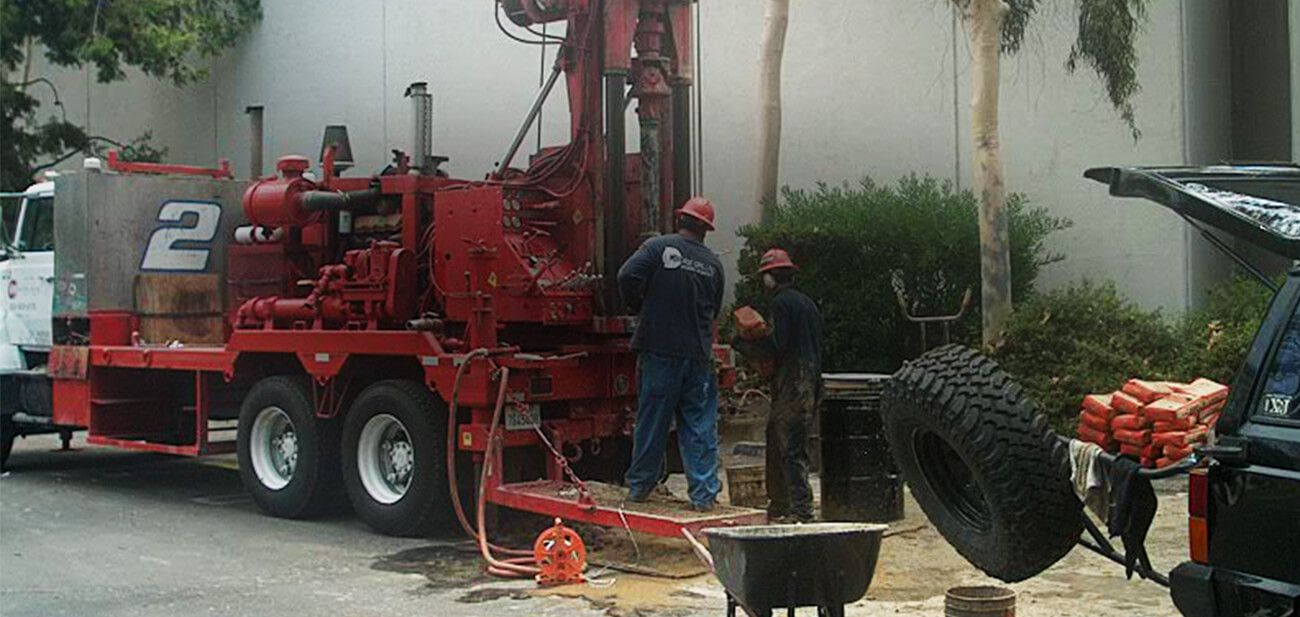The Future of Geotechnical Engineering: Just How Geotheta is Shaping Market Criteria
The Future of Geotechnical Engineering: Just How Geotheta is Shaping Market Criteria
Blog Article
Introducing the Vital Geotechnical Solutions: How Geophysical Survey, Incline Stability Analysis, and Groundwater Monitoring Enhance Infrastructure Growth
In the realm of framework advancement, the importance of geotechnical services can not be overemphasized. Geophysical survey, incline security analysis, and groundwater tracking stand as columns that bolster the foundation of large jobs. These solutions provide very useful insights into the subsurface problems, prospective risks, and total expediency of building and construction ventures. By utilizing the power of advanced technologies and professional evaluation, facilities developers can navigate complicated challenges with foresight and precision (geotheta). As we decipher the complex internet of geotechnical solutions, a much deeper understanding emerges of how these essential parts harmonize to not just mitigate threats but likewise optimize the efficiency and long life of infrastructure projects.
Importance of Geophysical Survey
Performing a geophysical survey is important in infrastructure growth as it gives critical understandings into the subsurface conditions and potential geological threats. By making use of different geophysical techniques such as ground-penetrating radar, seismic studies, and electro-magnetic induction, engineers and geologists can draw up the below ground structures and recognize potential threats before building begins. This proactive technique aids in staying clear of expensive shocks throughout the construction phase, eventually conserving time and cash.
Geophysical studies are specifically useful in assessing the stability of the ground, locating below ground utilities, and identifying prospective ecological problems. Understanding the soil structure, depth of bedrock, and water table degrees is vital for designing solid structures and drain systems that can stand up to all-natural forces and stop dirt disintegration.
Moreover, geophysical surveys play a significant duty in making certain the safety and security and long life of infrastructure jobs by supplying crucial details for website option, course planning, and danger reduction strategies. Generally, the value of geophysical studies in facilities growth can not be overstated, as they develop the foundation for lasting and effective building and construction jobs.
Enhancing Incline Security Evaluation
Enhancing incline stability evaluation is an important aspect of geotechnical engineering in ensuring the safety and resilience of infrastructure tasks. One secret technique for enhancing slope stability analysis is the utilization of mathematical modeling software, which allows engineers to mimic numerous slope conditions and potential failing devices.
Additionally, conducting detailed area investigations, including geological studies and geophysical screening, can boost the precision of incline stability analysis. In general, improving slope stability analysis is critical for guaranteeing the long-term safety and security and sustainability of facilities tasks.
Duty of Groundwater Tracking
Reliable groundwater monitoring plays an essential duty in making certain the stability and security of framework projects. Groundwater degrees can considerably impact the structural stability of foundations, tunnels, and various other below ground frameworks. By constantly checking groundwater degrees and high quality, designers can determine prospective threats such as dirt disintegration, foundation instability, and waterlogging.
Groundwater surveillance helps in examining the impact of building activities on local aquifers and water sources. It enables the very early discovery of any groundwater contamination, stopping environmental hazards and guaranteeing compliance with policies. Furthermore, by comprehending the groundwater characteristics, engineers can execute ideal dewatering measures to regulate water inflow during excavation and construction processes, decreasing the threat of additional reading flooding and architectural failing.
Integrating Geotechnical Services
Groundwater surveillance, a vital facet of facilities development, lays the foundation for integrating geotechnical solutions seamlessly right into construction tasks. This assimilation enhances the general task style, planning, and construction stages, published here leading to a lot more effective and affordable framework development.
Additionally, the assimilation of geotechnical services permits the identification of potential dangers and difficulties early in the project lifecycle, allowing positive measures to be implemented to minimize these problems. Through a multidisciplinary approach that integrates geophysical, geological, and hydrological information, designers can maximize construction procedures, reduce ecological effect, and ensure the long-term security and performance of the framework. On the whole, integrating geotechnical services is necessary for lasting and effective framework development.

Benefits for Framework Growth
In the realm of framework development, the use of integrated geotechnical solutions produces a wide variety of advantages that substantially improve job end results. One main advantage is the improved threat administration attained through geophysical surveys, which help determine subsurface problems and potential threats before construction commences. This proactive technique lessens the probability of unanticipated obstacles during the task, leading to set you back financial savings and timely conclusion. Slope stability analysis plays a crucial role in ensuring the safety and longevity of framework by evaluating the security of inclines and suggesting essential reinforcement actions. By implementing these analyses, designers can develop structures that hold up against natural forces and environmental conditions, lowering the danger of slope failures and linked problems. In addition, groundwater monitoring makes it possible for continuous monitoring of water degrees and quality, permitting early discovery of possible problems such as seepage or contamination. This proactive tracking not just safeguards the integrity of facilities however additionally supports sustainable water monitoring methods. In general, the unification of geotechnical services in framework development not only enhances project effectiveness but also adds to the durability and resilience of constructed facilities.
Final Thought

Enhancing slope stability evaluation is a critical element of geotechnical engineering in guaranteeing the security and durability of framework jobs. Generally, improving slope stability analysis is crucial for making sure the lasting safety and sustainability of infrastructure jobs.
Incline stability analysis plays a critical role in making certain the security and long life of facilities by evaluating the stability of inclines and recommending necessary reinforcement actions. geotheta.In verdict, geophysical study, slope security evaluation, and groundwater monitoring are vital geotechnical services that play a vital function in boosting infrastructure development. The advantages of incorporating these solutions right into facilities growth are clear, and their value can not be overstated in ensuring the long-term success and resilience of framework projects
Report this page